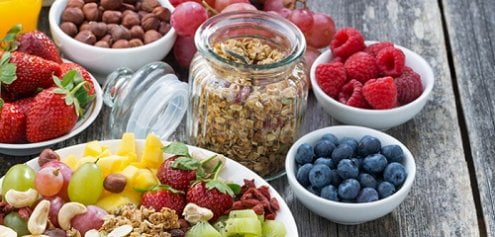What is insulin resistance?
Insulin resistance is a pathological condition in which the cells of the body fail to respond to insulin, a blood sugar-controlling hormone, in a normal manner. As a result, blood sugar levels become higher than normal, leading to prediabetes or diabetes.
Insulin resistance diet
If you are overweight or physically inactive, you are more likely to develop this condition. Luckily, a simple way to combat this issue is through your diet. To reverse the effects of potential insulin resistance, a low-calorie, high-fiber diet is essential.
Calories
When using diet to reverse insulin resistance, it is important for you to eat fewer calories. To help with this, try using an online food diary to keep track of your daily calorie intake. This will help to maintain normal blood sugar levels.
Grains
Grains are an essential part of any insulin resistant diet plan, because they are a rich source of energy and do not raise blood sugar. Grains include multi-grain bread, rice, cereals, and other whole grains. The number of servings required per day will depend on your body weight.
Fruits and Vegetables
Fruits and vegetables are nutritious, filling, and low in calories. It is important to eat 3–5 servings of vegetables and 4–5 servings of fruit every day. A serving of vegetables may be comprised of either 1 cup of raw vegetables, or 1/2 cup of cooked vegetables, while each serving of fruit is equivalent to 1 medium-sized piece of whole fruit, or 1/2 cup of fresh-cut fruit.
Protein
Protein sources that are suitable for an insulin resistant diet include poultry, lean red meat, and fish. Leaner sources of meat are preferred, because they are lower in calories and saturated fat than other members of this food group. You should eat between 3 and 6 ounces of protein per day.
Dairy
Dairy is an excellent source of protein and calcium. Individuals on an insulin resistant diet should consume 2–3 servings of dairy every day, each of which is comprised of 1 cup of milk or 1.5 ounces of cheese. Choose dairy products that are either low in fat or nonfat in order to limit both your fat and calorie intake.
Nuts, Seeds, and Legumes
Nuts, seeds, and legumes are very rich in nutrients: they are a source of protein, vitamins, and dietary fiber. Eat 3–5 servings of these foods every week. Each serving is comprised of 1/3 cup of nuts, or 1/2 cup of cooked legumes.
Fats and Oils
Fats and oils are very high in calories. As such, portion size is important in this category for insulin-resistant individuals. You should eat 2–3 servings of fats and oils every day. This amount includes salad dressings, margarine, oils used for cooking, and mayonnaise. It is best to opt for healthier fats, such as olive or vegetable oil.
Disclaimer: Please note that the contents of this community article are strictly for informational purposes and should not be considered as medical advice. This article, and other community articles, are not written or reviewed for medical validity by Canadian Insulin or its staff. All views and opinions expressed by the contributing authors are not endorsed by Canadian Insulin. Always consult a medical professional for medical advice, diagnosis, and treatment.


